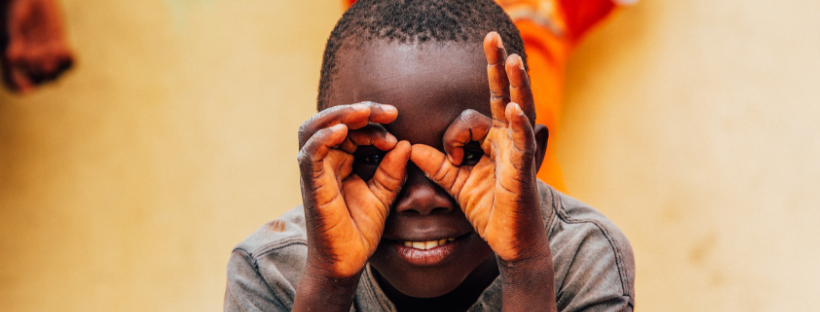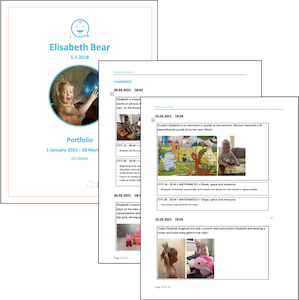
Portfolio and pedagogical documentation go hand in hand. Both focus on making the child's learning visible and enabling professional formative assessment of playful learning.
A portfolio is a compilation of various documents that show progress on the learning goals that are defined in the curriculum.
Pedagogical documentation aims to capture meaningful learning moments. Educators should then use these documents to modify their planning so that children learn even better.
Pedagogical documentation is an essential working method in early childhood education and it guarantees the best possible learning path for children. All valuable documents can be saved in a child's personal portfolio. But what type of documents should the portfolio include?
Documentation is observing for example children’s play, projects, discussions, ideas, and inventions via taking photos, making notes, writing down explanations as well as tricky questions, saving artwork, videoing action, recording voice...
Follow a consistent process throughout the year
The process of pedagogical documentation is meaningful only if you take advantage of the possibilities and challenges it offers. It is important to think about how you can develop the activities. What themes, methods or goals should you choose next? What is your next step toward better early childhood education? (Tarkka 2018.)
.png)
Before documentation:
- First of all, decide what type of learning portfolio you are making as it matters in which from the observations are. A digital one, paper copy...?
- Have all the needed materials and tools ready for documenting! A camera, mobile phone, tablet, pen&paper...
- Think of what are meaningful and current questions, issues or topics in the group? It is impossible to document Everything so narrow it down.
- Once you have chosen a topic and method, start observing and documenting!
During documentation:
- Put down the date & time
- Take a photo or video of the child during play or other meaningful learning moments
- Observe what the child is doing - write down
- Listen to what the child is saying - record
- Who the child is playing with or is she/he alone?
- Connect the observation with a curriculum learning objective
After documentation:
- Collect all the learning documents in one secure place (eg. in a digital portfolio)
- Discuss with each child regularly all the things you have been learning about
- Show all artworks, photos, videos, recordings, and other documents and let the child tell his/her views and write the child’s words down.
- Decide together with the child which documents you keep in the portfolio!
- Ask the child questions such as What was fun? What was difficult? What made you happy/unhappy? What were you thinking in this moment? What would you like to do and learn next? Add the child's comments to the portfolio
- Assess how the activities worked out, what did the child learn?
- Connect the observations and notes to the curriculum and include the learning areas that have been left out in future planning
- Share the documents and learning portfolio with the family or other meaningful people and let them follow the learning objectives achieved. Ask for feedback.
- Plan next themes and projects according to the discussions with the children and families, observations, and documentation
By doing all this
- A child's learning becomes visible
- You can easily follow the curriculum objectives
- You get feedback from children and families
- Children get to participate in planning
- You can reflect and assess learning and your teaching methods
- Each child receives a personal portfolio that shows their unique learning journey and is full of the child's favorite memories from kindergarten times!

How to keep the child in focus and have the time for smooth and efficient documentation?
Many educators become overwhelmed by the challenge of documenting. But you must not overdo it and try to document everything. Even making only one observation per week for each child, creates more than 40 observations per year. Think quality, not quantity.
Following the process above and meeting the curriculum standards of today is almost impossible without a digital tool like Kindiedays Portfolio Learning. With Kindiedays you also connect observations to the curriculum objectives and learning reports are collected automatically. And it is so much more fun, gives the time for children and shows the high quality of your center.
Happy documenting!
.png)
References:
Tarkka, K. 2018. Finnish National Agency for Education. https://www.oph.fi/fi/koulutus-ja-tutkinnot/pedagoginen-dokumentointi
.png)